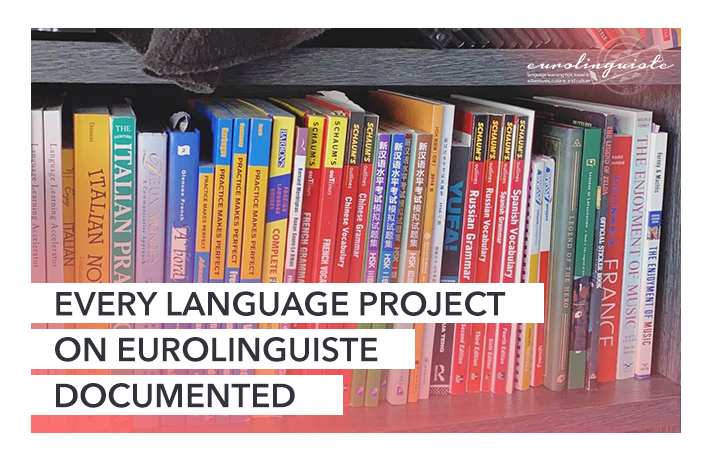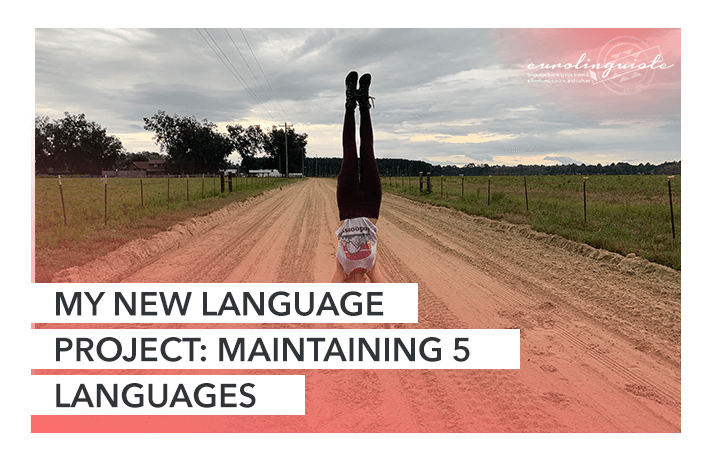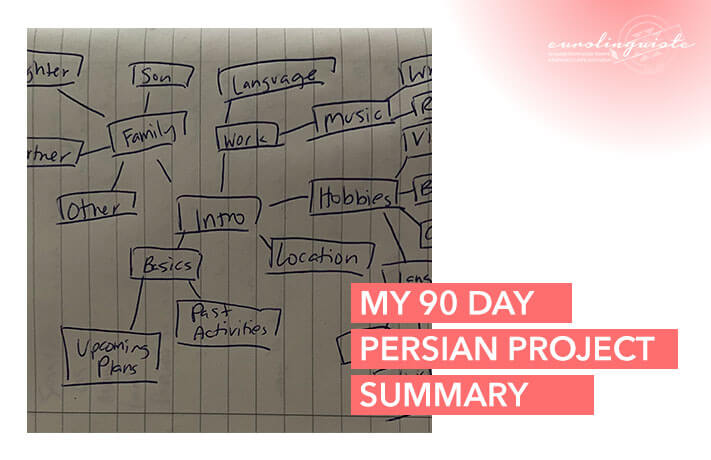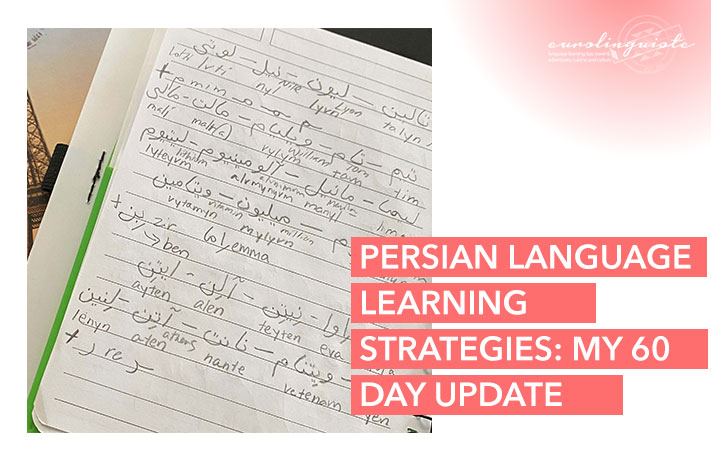Learn Persian with Our Resident Polyglot, Shannon Kennedy

My name is Shannon Kennedy and I'm the language lover,…
This post originally appeared on the Drops blog.
Hey there, Shannon here, the Resident Polyglot at Drops. I’m excited to share I’m about to embark on my latest language learning project with Drops.
In the past, I’ve learned Icelandic, Hindi, Hebrew, and Hungarian with Drops and now I’m ready to take on another new language.
It’ll be my fourteenth language and I’ve learned a few things about language learning along the way, so I’ve asked you what you’d like to see as you follow along on my latest language project.
Here’s what you asked:
What language are you starting?
Of course, I had to start with the question you are all probably asking–what language do I plan on learning? It’s…
Persian! Woot! And I’m very excited to learn it.

If you had 3 months to learn a new language from scratch, what would be your game plan?
That’s precisely what my plan is in learning Persian–to focus on it for three months. Several of my language projects, including when I learned Japanese, Hebrew, and Hindi, had three-month time frames. So to make a long story short, three-month language projects are something I have experience doing.
The first thing I do when taking on a new language is to set a goal I’d like to reach by the end of the three months. For my second Japanese project, it was to have a 15-minute conversation about the Legend of Zelda (I’m kind of a big fan). For Hungarian, it was to learn enough Hungarian that I’d be able to surprise the founders at Drops–native Hungarian speakers. For Russian, I set a weekly goal I aimed to sustain over a three-month period to read and discuss Game of Thrones in Russian with my tutor.
And for Persian, I’m once again going for the element of surprise. At the end of the three months, I plan to surprise family friends with my ability to speak Persian.
With this goal in mind, there are several clear tasks I need to focus on. One is that I need to learn tons of vocabulary (I’ll be using Drops for this). Another is that I need to learn basic conversation skills–both speaking and listening. To accomplish this, I’ll work with a tutor once a week to practice conversing and build my skill in the language, do lots of listening, and daily vocabulary study.
To be more specific, I’m aiming to do at least one Pimsleur lesson a day, 5-15 minutes of vocabulary study a day, and one lesson per week. For each lesson, I’ll pick a topic I’d like to work on. And between lessons, I’ll independently build a script I’ll bring to my lessons to practice and get corrections on. I’ll also study these scripts so that by the end of the three months, I won’t need to rely on them anymore.
I also intend to learn to read and write in the language.
Finally, I’ll make use of any opportunities I have to use the language outside of lessons and independent study. Thankfully I live in an area where there is a community of Persian speakers, so even visiting one of the local grocery stores can offer me the chance to practice the language by reading labels and making small talk with the staff.
There will likely be other things I do, but that’s the core of it. And, of course, I plan on documenting what I do and sharing bi-weekly updates on my methods and progress here.

Are you planning on learning this language differently than your other ones? If so, how?
This will be the first “local” language I’ve aimed to learn with the intent of using it locally. Many of the other languages I learned (recently) were prior to a trip, so I had a very clear deadline ahead of me–the date of my departure.
With this language, the deadline is a little vaguer. I could technically end the project whenever I’m ready, but we all know how that goes. It’s easy to never feel ready. So in this respect, learning this language will be a little different for me.
As far as methods, I’ll continue to do much of what I’ve done in the past because I know it works.
One thing I will be doing differently, however, is which tutoring platform I’ll use. Historically, I’ve used italki to find my language tutors, but after seeing Nelson’s success with his Dutch tutor on Preply, I decided to give this new-to-me platform a try.
What should one keep in mind when learning a new script? / What is your first step in learning a language with a different alphabet than English?
Whether or not I spend time learning a new script when I first start studying a language depends on the complexity of the script. For example:
- When I started learning Chinese, I initially focused on using pinyin until my lack of knowledge of Chinese characters began to inhibit my comprehension (about a month in).
- When I started learning Japanese, I only learned Hiragana at first. My tutor exclusively wrote notes from our lessons in Hiragana so I could read them and I was also able to find several resources that used just Hiragana (or introduced the other two systems slowly). I had the advantage of already being able to read Chinese characters, so I understood a lot of Kanji even if I didn’t know how to pronounce them.
- When I started learning Russian and Korean, I learned the alphabets right away. They’re both relatively simple writing systems, so they can be learned within a few hours. Plus, knowing how to read and write in Russian and Korean helped me immensely with pronunciation. For these languages, romanization often just doesn’t cut it.
- When I started Hindi, I didn’t spend any time learning Devanagari because my focus was on speaking and listening comprehension. I still haven’t learned this writing system despite having a basic conversational ability in Hindi.
- When I started learning Hebrew, I waited until I studied the language for a few weeks before I focused on the writing system.
For Persian, I plan on learning the writing system in advance. Here’s how I’ll do it:
First, I would usually familiarize myself with the alphabet with Scripts, my favorite app for learning a new writing system. At this time, however, the Persian alphabet isn’t included as a part of the app. Instead, I’ll use a video like this to get acquainted with the system.
I’ll then practice writing each of the letters, begin writing basic words, and practice reading simple words in Drops. From there, it’s just a matter of practice and patience.

Any good ways to approach new grammar? Resources for learning grammar?
I answered this question in one of my first Ask the Polyglot videos on Instagram. But I’ll also touch on this here as well as make recommendations for my favorite grammar resources.
I learn grammar on an as-needs basis.
This means when I realize that I’m missing a particular grammar structure to continue improving my communication skills, I’ll set aside time to work on it. Prior to that, you can get by in a lot of situations with set phrases and questions.
How do you know when you need to know grammar? What you need to learn grammar-wise is usually pretty obvious. For example, if I wanted to talk about something in the past, but don’t know the past tense, I need to learn how to use the past tense. To do this, I usually purchase a grammar reference book (which I’ll–reference–below). I’ll look up the grammar, practice a few sentences on my own with it, and then, I bring it to a lesson with a tutor, letting them know I want to talk about an event in the past, like what I did over the weekend, then ask them to pay particular attention to how well I’m using the past tense.
Here are the grammar books I’ve found success with:
How long would it take to learn a new language?
There are a lot of factors that need to be taken into consideration when determining how long it takes to learn a language. How close is it to your native language? How motivated are you to learn it? Exactly how are you using your study time? What do you consider having “learned” a language to be? Fluency? An ability to speak and understand it? To pass an exam?
To answer this question, I typically reference the Defense Institute’s language categories. They organize languages into four categories. Category I includes languages that are easy for an English speaker to learn like French, Spanish, Afrikaans, or Danish. They estimate these languages take 575-600 hours to learn.
Category II languages are slightly more challenging, requiring about 750 hours of study. This includes languages like German. Category III languages such as Indonesian and Swahili take about 900 hours. And Category IV languages including Croatian, Russian, and Hungarian are said to take about 1,100 hours.
Persian is a Category IV language. So if I studied two hours a day every single day, it would take me about 79 weeks to “learn” the language.
To Sum Up My New Language Project: Learning Persian
At the end of about 90 days, I hope to have learned enough Persian to be able to surprise some family friends. I know they’ll be excited to find out I started learning the language on my own.
I will start out using Preply, Drops, the Fluent in 3 Months Bootcamp, and Pimsleur. In the first week of learning Persian, I’d like to learn the Persian writing system, get my self-introduction down in Persian and learn around 100 words.
My Persian Language Updates
I plan to update you on my progress around once every two weeks and to keep everything in one place, I put this page together so you can find all my Persian updates in chronological order.
In the meantime… Do you have any advice for me as a new Persian learner? Or maybe you have resource recommendations for the language. Let me know! I’ll be back soon with another update!

My name is Shannon Kennedy and I'm the language lover, traveler, and foodie behind Eurolinguiste. I'm also the Head Coach of the Fluent in 3 Months Bootcamp, co-founder of Women in Language, and former Resident Polyglot at Drops.






